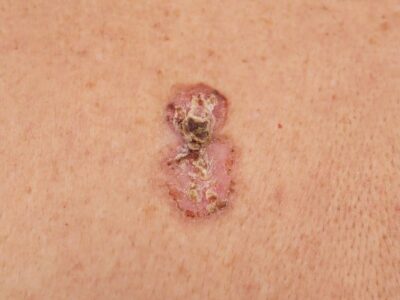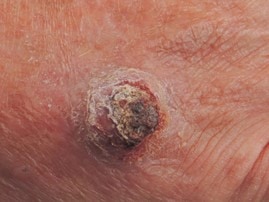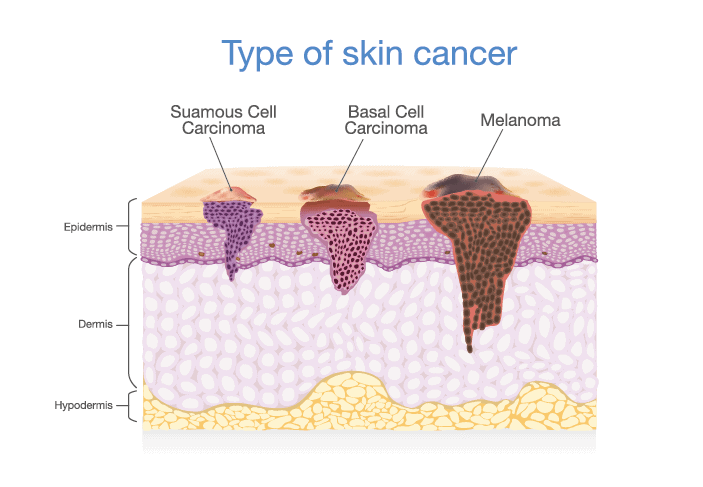Summer is here and we are all enjoying the hot, sunny weather! We have to remember that the sun, and over-exposure to it, is damaging to the skin. However there are several misconceptions out there about sun protection, so let's start by busting some of the myths.
- It is not possible to get sunburned on cloudy days.
False! This is one of the most common myths. It is easy to get a false sense of security when it is grey out. But the truth is, it is possible to get sunburned even on a cloudy day. Up to 80% of the sun’s UV rays can penetrate through clouds and damage your skin. - People with dark skins do not need to be careful of the sun.
False! Contrary to widely held beliefs, people with darker skin tones still need to stay out of the sun. Yes people with darker skins produce more of a pigment known as melanin, which offers some natural protection against UV radiation. However, this natural protection only helps to a certain extent. So people with darker skin tones can still get sunburned and they will also develop skin cancer from UV damage. - I cannot get sun damage through my car window.
False! UV rays can still reach you even when you are inside your car. Windshields are made from two layers of glass laminated with a plastic layer in-between, so they block both UVA and UVB rays. However, your side and rear windows consist of a single-pane of regular glass, which only blocks out UVB rays and still lets UVA rays through. UVA rays are associated with premature aging and skin cancer. - A higher SPF means I can stay in the sun longer.
False! The SPF value is not an indication of how long you can stay outside in the sun. Rather, it indicates the proportion of UVB rays blocked by a sunscreen. SPF 15 blocks 93% of UVA rays, 30 blocks 96.7% of UVA rays while an SPF of 50 blocks 98%. It is therefore not necessary to use anything stronger than SPF 15. What is more important is that you use a sunscreen and not a sun block and that you apply the sunscreen every 30 minutes. Sunscreens contain the white pigments zinc and titanium, while sun blocks contain chemical substances that allow the sun to enter your skin and neutralize the damaging effects of the rays. - I tan instead of burn, so I do not need sun protection
False! There is no such thing as a healthy tan. It is an indication that UV rays have damaged your skin cells. Your skin tries to increase production of melanin to protect the skin from further damage, hence the darker colour. But a tan actually means your skin has already been damaged.
If you did get too much sun and are red from it, use our Wound & Burn Care spray regularly on the inflamed areas. Its anti-inflammatory action will control the inflammation and the painful redness will disappear. The spray will also reduce the skin cell damage from UV rays of the sun, reducing the risks associated with bad sunburn.
Skin Cancer
The bad news is that if you haven't been safe in the sun you will most likely end up with some form of sun damage, and maybe even skin cancer.
There are three main types of skin cancer:
- Basal cell carcinoma
- Squamous cell carcinoma
- Melanoma
Knowing the key signs for each type can help you catch skin cancer early — which can improve your chances of successful treatment. Here is what to know about the signs and treatment options for each type of skin cancer.
Basal cell carcinoma
 Basal cell carcinoma (BCC) will typically include a raised bump.
Basal cell carcinoma (BCC) will typically include a raised bump.
BCC happens when the basal cells in the outermost layer of the skin develop a DNA mutation.
Signs and symptoms
Very often, BCC resembles a pimple that will not go away. Other signs can include:
- Occasional bleeding from the bump
- Shiny skin-coloured bump with a raised, pearly border
- Pinkish dry and scaly patches of skin
- Waxy-looking scar-like bump with no clear border
BCC and squamous cell carcinoma (SCC) are especially common in sun-exposed areas, like your face and neck, head, chest, and arms.
Treatment
BCC is slow growing and very rarely spreads. The most common treatments include:
- Mohs surgery: This in-office procedure removes the skin cancer layer by layer until no cancerous cells remain.
- Surgical excision: This procedure removes the lesion, along with a small amount of surrounding healthy skin.
If you cannot undergo surgery, or surgery alone does not treat the cancer, your dermatologist may recommend radiation therapy to kill the cancer cells.
When the lesions are small and thin, you may also have the option of topical treatments or cryosurgery, which freezes cancer cells with liquid nitrogen.
Squamous cell carcinoma
 Squamous cell carcinoma will typically include a crusted bump and may bleed occasionally.
Squamous cell carcinoma will typically include a crusted bump and may bleed occasionally.
DNA damage to the squamous skin cells also causes this type of skin cancer.
Signs and symptoms
One of the earliest signs of SCC is actinic keratosis. These precancerous skin growths often appear as reddish or deep brown, rough, and scaly spots, or patches. They can eventually turn into SCC.
SCC often appears as:
- A firm, rough bump that may crust over and bleed.
- A raised growth that sinks down in the middle.
- A sore that will not heal or keeps coming back.
- A bump that has an unusual colour when compared to the skin around it.
- A rough lesion on your lip or inside your mouth that may turn into an open sore.
Treatment
SCC is more likely than BCC to grow into deeper layers of your skin and spread. That is why early diagnosis is crucial. When caught early, Surgery cures SCC. In the case of smaller, low-risk SCC lesions, your dermatologist may recommend curettage or electro dissection an in-office procedure that involves scraping the tumour off the skin and then using an electrode to destroy any remaining cancer cells. In cases of more advanced SCC where there is an elevated risk it will spread your doctor may recommend radiation therapy as a secondary treatment.
Melanoma
 Melanoma typically appear as dark spots on the skin.
Melanoma typically appear as dark spots on the skin.
DNA damage to melanocytes causes melanoma. Melanocytes are skin cells that produce melanin, the pigment that gives your skin its colour. It only accounts for about 1% of all skin cancers but rates are rapidly increasing.
Signs and symptoms
Thirty percent of melanomas develop within existing moles and appear suddenly as dark spots. That is what makes it so essential to pay attention to any changes in your skin.
The ABCDE acronym may help when looking for signs of melanoma:
- Asymmetry: An irregular shape — one half does not match the other
- Border: Jagged edges
- Colour: Uneven colour
- Diameter: Larger than a pencil eraser or pea (6 mm)
- Evolving: Changes in shape, size, or colour in recent weeks
Women are more likely to have melanomas on their legs, while men tend to get them on their backs. These lesions may itch or bleed.
Treatment
Experts consider melanoma one of the most serious skin cancers because it can spread quickly to any organ.
After diagnosing melanoma your surgeon may remove smaller lymph nodes to assess them for cancer cells, to determine whether the cancer has spread. If the melanoma has not spread then your treatment option will be surgery to remove the cancer plus a portion of healthy surrounding skin.
If the melanoma has spread then your treatment options will include immunotherapy (drugs that activate the immune system to help your body fight the cancer) or targeted cancer therapy (includes drugs that will attack cancer cells if they have a specific mutation).
Risk factors
 Factors that may increase your risk of skin cancer include:
Factors that may increase your risk of skin cancer include:
- Excessive exposure to ultraviolet (UV) radiation from the sun or indoor tanning.
- Light-coloured skin, eyes, and hair.
- A history of skin cancer or precancerous lesions.
- A history of sunburn.
Exposure to UV light remains the main risk for melanoma. UV light damages the DNA inside your skin cells, which can cause mutations that lead to cancer. Since it can sometimes be hard to distinguish between a regular mole and skin cancer, we strongly advise getting an annual skin screening, where your dermatologist will examine your body from head to toe for signs of cancer. Doing this once a year ensures that changes are more easily picked up when comparing one year to another and to a baseline.
Regularly examining your own skin for any changes can help you catch cancer early and ensure you get treatment as soon as possible to minimise the risk of it spreading.